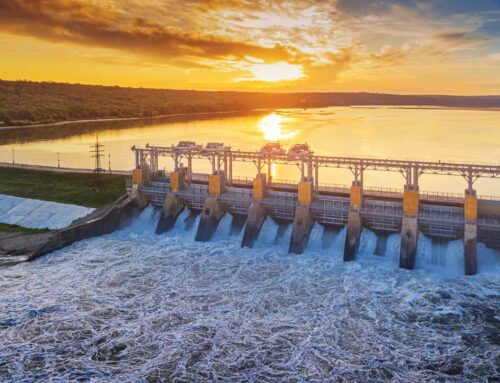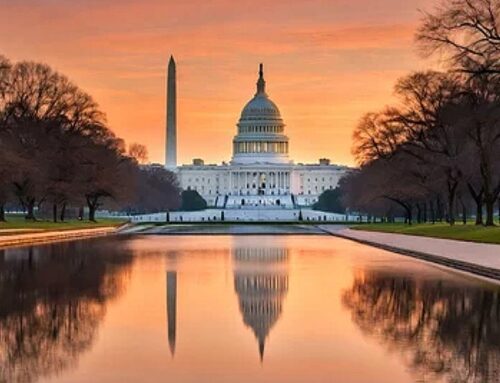NWC News Alert (March 30, 2022 edition)
Good afternoon NWC members,
It’s a beautiful day in the neighborhood, although it’s been a bit chilly in Washington, D.C. in the last several days. Luckily, the cherry blossoms don’t realize that and reached peak bloom last week. Speaking of our nation’s capital, the President Biden’s budget was released on Monday. I have some highlights below.
And a bit of news from the NWC Membership Front—we have several new members which we will be highlighting in future NWC Federal Spotlights. Today’s welcome goes to Yuba Water Agency in Marysville, Calif. More about them below. Welcome!!
Also, be sure to congratulate NWC member Sean Duffy (Executive Director of the Big River Coalition and chair of NWC’s Navigation Caucus) who is slated to receive the 2022 C. Alvin Bertel Award on June 24, 2022. The Bertel Award is given by the World Trade Center New Orleans to individuals who have made significant contributions to the Louisiana port and maritime community. Congratulations Sean!
Finally, remember to register for NWC’s 2022 Legislative Summit in Washington, D.C. on April 25-26, 2022. While the schedule is still being finalized, we already have a solid line-up of speakers from the water/waterways realm. Additionally, the Summit provides ample opportunities for quality engagement with your peers and speakers. Including within the registration fee is lunch, a welcome reception and numerous networking breaks all for an affordable registration of an early-bird special of $350 (paid by March 31) or $450 after March 31.
- For more information about NWC’s Legislative Summit, including on how to register, click here.
As always, if you have any questions, comments or just want to shoot the breeze, please, please do not hesitate to contact me. We look forward to working with you!
Best, Julie Ufner, NWC President and CEO
NWC WELCOMES YUBA WATER AGENCY!!
NEW NWC MEMBER. On behalf of NWC, please extend a warm welcome to one of NWC’s newest members, Yuba Water Agency in Marysville, Calif.! Yuba Water Agency is a stand-alone public agency governed by a board of seven elected officials to serve the people of Yuba County. Established by a special act of the California State Legislature in 1959, the agency’s primary missions are flood risk reduction, water supply reliability, fish habitat protection and enhancement, hydroelectric generation, and recreation at New Bullards Bar. Yuba County has historically endured devastating floods, due in part to Gold Rush-era hydraulic mining practices that washed millions of cubic yards of debris into the Yuba River, raising the riverbed and increasing the flood risk. As gold mining gave way to farming and ranching, water users south of the Yuba River overdrafted the aquifer, causing dramatic declines in groundwater levels. To resolve these problems, Yuba Water Agency proposed the Yuba River Development Project, a multipurpose flood control, water and power project that was approved in 1961. In 1966, the Federal Energy Regulatory Commission (FERC) issued a license for the project, and Yuba Water Agency completed construction in 1970. Today, Yuba Water Agency owns and operates facilities with a capacity of storing approximately one million acre-feet of water and generating more than 400 megawatts of hydropower. Each year, Yuba Water Agency releases more than 300,000 acre-feet of water to eight irrigation districts that convey the water to local farmers and ranchers in Yuba County. The NWC representatives are Mr. Willie Whittlesey, General Manager of Yuba Water Agency and Adam Robin, Government Relations Manager of Yuba Water Agency. Welcome abroad!
- FUN FACT ABOUT YUBA WATER AGENCY: Yuba Water Agency owns and operates New Bullards Bar Dam and reservoir, the fifth tallest dam in the U.S.!
ADMINISTRATION SPOTLIGHT
BUDGET. On March 28, President Biden released FY2023 budget request. Earlier this week, the president released his annual budget request, clocking in at more than 1,400 pages, for the coming appropriations season on Capitol Hill. While the budget request is largely symbolic and lays out the president’s priorities, it generally jump-starts the annual appropriations process on Capitol Hill. In the coming weeks, numerous House and Senate hearings will hold hearings on the administration’s proposed budget before putting pen to paper on their FY2023 budgets.
The president’s FY2023 $5.8 trillion budget proposal highlights many of the administration’s key priorities including climate initiatives, health proposals and military/police spending. Specifically on climate funding, the administration notes that its funding combined proposals across all agencies total around $44 billion, a 60 percent jump over FY21. Most notable, the budget proposal includes a new 20 percent minimum tax on the top .01 percent of wage earners, called the “Billionaire Minimum Income Tax,” for households worth over $100 million. According to the White House, the tax would reduce the deficit $360 billion over 10 years. Other proposed administration tax changes include, but are not limited to, raising the corporate tax rate from 21 percent to 28 percent; increasing the top marginal income tax rate of 37 percent to 39.6 percent for people earning more than $400,000/joint filers more than $450,000; change capitol gains for taxpayers with taxable income over $1 million; and eliminates several fossil fuel tax incentives. Tax increases on corporations and individuals were discussed previously in Congress during negotiations in the recently stalled Build Back Better package but were not universally supported.
While NWC is still digging into the budget, below are highlights from the U.S. Army Corps of Engineers proposed FY2023 budget.
U.S. Army Corps of Engineers
Within the U.S. Army Corps of Engineers (USACE) portfolio, the budget provides $6.6 billion, close to $2 billion less than USACE received under the FY2022 appropriations finalized earlier this month. The president’s budget is only the opening round in Congress’s overall budget discussion and Congress has routinely increased USACE’s budget above the president’s request. According to a USACE briefing book, the USACE budget focuses on the following priorities: increase resiliency to climate change; support the administration’s Justice40 Initiative to spur economic opportunities in disadvantaged communities facing climate change; facilitate safe, reliable and sustainable commercial navigation’ reduce the risks associated with riverine and coastal flooding and restore aquatic habitat where the aquatic ecosystem structure, function and process have degraded.
Highlights of key USACE programs
- Investigations receives $116 million for FY2023 under the president’s budget. This amount is derived from $105.9 million for the investigations account and $9.75 million from the Mississippi River and Tributaries account. The budget gives $37.4 million in community technical and planning assistance to help address climate risks, “with an emphasis on non-structural approaches,” $15 million for research and development, and funding for climate resilience studies for the Great Lakes, as well as in Florida.
- Construction is slated to receive a total of $1.33 billion under the proposed budget, which include $1.22 billion from the construction account, $22.3 million from the Harbor Maintenance Trust Fund, $13.8 million from the Inland Waterways Trust Fund, and $66.7 million from the Mississippi River and Tributaries account. The budget includes $407 million for the South Florida Ecosystem Restoration (Everglades) program and $50 million for the Innovative Funding Partnership to speed up the construction of specific authorized projects.
- Operation and Maintenance would receive $4.45 billion for operations and maintenance ($2.6 billion from the operations and maintenance account, $1.7 billion from HMTF and $148.5 million from the Mississippi River and Tributaries account. The proposal gives maintenance priority to busiest coastal ports and inland waterways. Furthermore, the budget provides $86 million for O&M climate- and/or resiliency-related activities, $49 million to provide adverse impact mitigation for USACE-owned projects, and $20 million to construct zero-emission vehicle refueling infrastructure at USACE-owned projects.
- Mississippi Rivers and Tributaries would receive $230 million under the president’s budget, derived from $225 million from the MR&T account and $5.31 million from the HMTF account.
- Harbor Maintenance Trust Fund (HMTF) projects would receive $1.726 billion under the budget for eligible projects (priority given to O&M, including dredging). This provision includes $994 million to the top 50 coastal ports who, according to USACE, hand 90 percent of the waterborne cargo that is carried to/from the U.S. to other parts of the world. The budget also includes $203 million for Great Lakes O&M, $55 million for native American tribes for historic fishing areas, and $21.35 million for a construction project that will use dredged materials from coastal navigation projects.
- Inland Waterways Trust Fund (IWTF) receives $13.75 million in the budget to complete construction of the Chickamauga Lock, Tennessee River project.
- Flood Control and Coastal Emergencies gets $35 million under the president’s budget to help USACE staff prepare and train for natural disasters.
- Water Infrastructure Finance and Innovations Act secures $10 million in funding for non-federal dam safety projects under the proposed budget.
Specifically, similar to previous administrations, the budget attempts to carve out categories for HMTF and IWTF, which Congress has rejected for the past three administrations.
The House and Senate Budget Committees have already held their first round of budget hearings yesterday and today with recently confirmed Office and Management Director Shalanda Young. As predicted, Director Young received pointed questions on specific budget proposals. These hearings will continue through the summer with cabinet secretaries and agency heads before Congressional appropriations draft up their respective FY2023 appropriations bills.
Resources:
- To read the President’s budget, click here.
- To read the detailed budget estimate for USACE—Civil Works, click here
- To view the FY2023 Civil Works Budget Press Book for USACE, click here.



